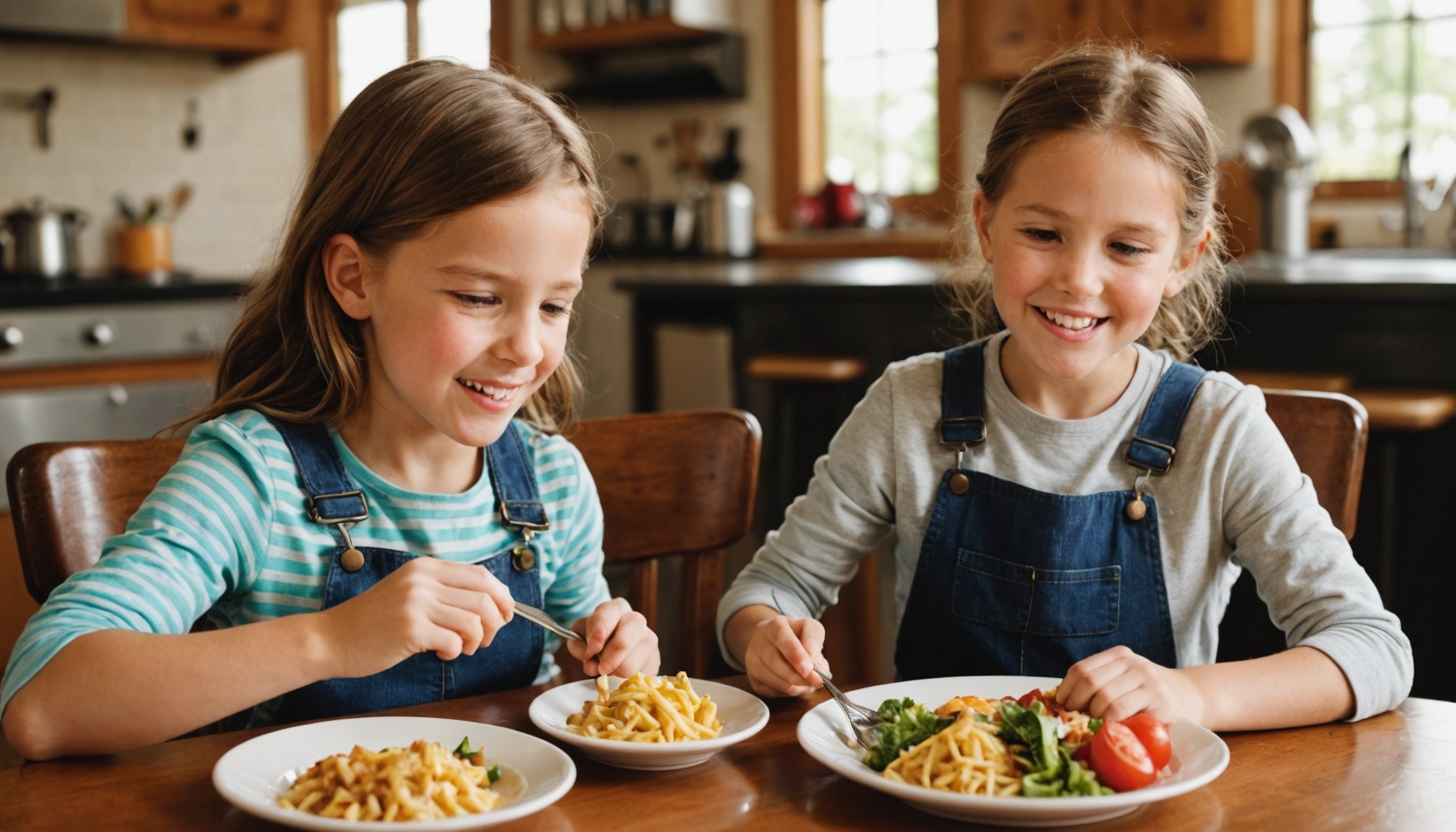Understanding Child Preferences
Children often favour specific flavour profiles, such as sweet and mild tastes. This preference can be seen in their love for cereals, fruit-flavoured snacks, and dairy products like yoghurt. Additionally, texture plays a significant role in children’s food choices. Many kids prefer softer textures, which might explain their aversions to certain vegetables that are crunchy or fibrous.
Colour is another factor that attracts children to particular foods. Bright, vibrant hues can stimulate interest and make meals more enticing. For instance, a plate with an array of colourful vegetables can be more appealing than a dish with duller tones.
This might interest you : Essential Strategies to Keep Your Restaurant’s Raw Bar Exceptionally Fresh;200Top Techniques to Streamline Inventory Management for High-Traffic Restaurants
Involving children in menu planning can positively influence their eating habits. By allowing kids to have a say in their meals, parents can foster a sense of autonomy and increase the likelihood of them eating nutritious meals. This involvement can also prompt children to try new foods and develop a more adventurous palate.
To make meal planning an engaging experience, parents can set aside a day each week to discuss new recipes or go grocery shopping together. This provides an opportunity to teach kids about different ingredients and make healthy eating a family goal.
Additional reading : Unleash Flavor and Health: Elevate Your Restaurant Menu with Organic Ingredients
Nutritious Yet Fun Menu Items
Creating balanced meals for children can be a delightful adventure with the right ingredients and creativity. Starting with healthy recipes is essential. Key ingredients like whole grains, lean proteins, and fresh vegetables can form the foundation of meals. But how do you make these items appealing to kids?
Creative twists on classic dishes can enhance their nutrition without compromising taste. Consider turning a traditional pizza into a colourful garden pizza with a whole-wheat crust. Add a rainbow of vegetables such as bell peppers, spinach, and cherry tomatoes. This not only boosts the meal’s nutritional balance but also makes it visually enticing.
Incorporating fruits and vegetables in fun shapes and colours is another effective strategy. Using cookie cutters, parents can transform fruits like melons and apples into stars or animal shapes. This approach makes healthy options more engaging.
Furthermore, serving these imaginative dishes with dips or sauces, like hummus or yoghurt, can encourage kids to try them. The combination of appealing aesthetics and taste ensures kids receive the necessary nutrients without sacrificing their enjoyment. Making meals fun and nutritious not only benefits kids’ health but also fosters positive eating habits that last a lifetime.
Engaging Menu Presentation Ideas
Creating visually appealing food can significantly increase a child’s interest in eating it. One simple technique is employing bright, varied colours to make meals more engaging. For instance, arrange a vegetable stir-fry with a rainbow of peppers, carrots, and broccoli to captivate children’s attention.
Themed presentations add another layer of fun to meals, transforming them into exciting adventures. A “Jungle Safari” lunch might include cucumber ‘trees’ and cheese ‘lions’. Using creative plating simulates play, making it a delightful dining experience.
Playful serving utensils can further pique interest. Imagine serving a salad with dinosaur-shaped tongs or soups in mugs with animal faces! Containers like bento boxes with compartments invite creativity and foster a sense of control in children over their meals.
Such interactive elements not only boost meal enjoyment but also encourage kids to try new foods. By blending imaginative presentation with nutritious ingredients, the goal is to cultivate a positive relationship with food that extends beyond mere sustenance, making it an enjoyable aspect of their daily routine. These approaches create lasting habits and an appreciation for a varied diet.
Easy Recipes for Parent and Child Cooking
Engaging children in the kitchen can be a rewarding experience filled with laughter and learning. Easy recipes play a crucial role in making this experience enjoyable for both parents and children. Start by selecting simple dishes that align with kids’ preferences and encourage them to participate actively.
Cooking together offers various benefits, such as fostering family bonds and introducing children to essential life skills. It provides a fun and educational platform where children can learn about measuring ingredients, understanding different textures, and observing cooking processes like boiling or baking.
To make the process delightful and educational, parents can choose recipes that allow children to express their creativity, like decorating pizzas or assembling fruit salads. Through such activities, children gain a sense of achievement and develop their culinary interests.
Introducing games or challenges during cooking can add excitement. Try timing how quickly ingredients can be mixed or turning stirring into a musical task. These engaging methods not only keep children entertained but also instill a sense of accomplishment and curiosity.
Family cooking sessions can become cherished memories, forming positive associations with food and health. Through shared efforts and enjoyment, they pave the way for nutritious eating habits that last a lifetime.
Dietary Accommodations and Allergy-Friendly Options
Creating inclusive menus for children with dietary restrictions requires thoughtful planning and awareness. For children with food allergies, it’s crucial to find substitutions for common allergens without sacrificing taste. This might involve using almond or oat flour as a substitute for wheat flour in baked goods. Exploring options like coconut milk or soy milk can serve as alternatives to dairy products, ensuring that meals remain both delicious and allergen-free.
Clear labeling of meals is paramount in maintaining safety. Highlighting ingredients and potential allergens helps to avoid accidental consumption of unsafe foods. Trust and assurance are built when families can easily identify what dishes are suitable for their child, and it promotes an inclusive dining environment.
Incorporating simple changes can make meals vibrant and varied while respecting dietary needs. Consider crafting allergy-friendly recipes that maintain flavour through alternative but safe ingredients. This not only allows children with restrictions to enjoy the same meals as others but also fosters a more communal and connected meal experience.
By embracing allergen-aware cooking practices, parents and caregivers can create environments where every child feels safe and included at the table, forming more positive associations with meals and healthy eating habits.
Creative Ideas to Get Kids Involved
Making children active participants in the kitchen can be both fun and educational. Encouraging kid involvement in menu selection can spark their interest and excitement about meals. Allowing them to choose between healthy options or suggest new meal ideas can foster decision-making skills while promoting healthier choices.
Incorporating cooking activities with educational elements can enhance the fun and learning experience. Teach kids about math by measuring ingredients or explore science concepts during baking. Such activities transform cooking into a playful learning environment.
It’s beneficial to use rewards and positive reinforcement to motivate children’s participation. Simple rewards, like praise or letting them pick a dessert, can be effective. These methods build confidence and enthusiasm, leading to more engaged and happy little chefs.
By involving kids in these processes, they develop a better understanding of their food, learning about nutrition without feeling pressured. Importantly, these interactions also create opportunities for quality family time. Each session in the kitchen becomes a memorable bonding experience, instilling lifelong skills and preferences for diverse, nutritious foods. When children feel invested in the cooking process, they are more likely to try new foods and enjoy the family meal experience.




